Convento de Santa Ana (San Francisco), Orihuela
The Convento de Santa Ana, Franciscan monks.
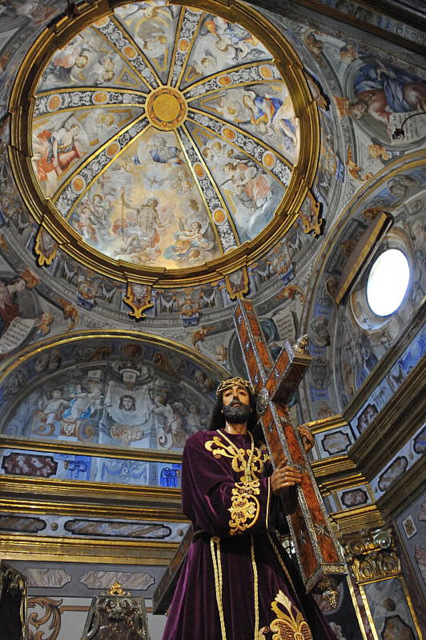 This charming convent is set slightly outside of the main centre of town being located amongst tranquil gardens in a residential area.
This charming convent is set slightly outside of the main centre of town being located amongst tranquil gardens in a residential area.
It was first built outside of the boundaries of the city walls in 1594 by the Franciscan monks, and comprises a spacious building on three floors, with a small central cloister, a refrectory and a large church. The monks chose this higher ground after their original monastery which had been built down in the centre of the town at the end of the 15th century was continually flooded by the river, although even here they were not immune to flooding.
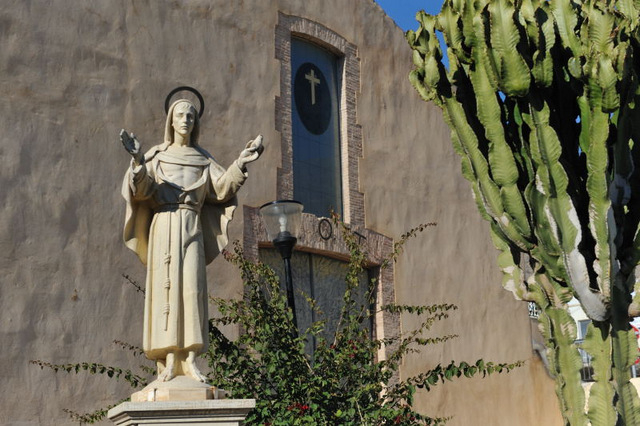 Major amplifications were undertaken between the period of 1735 and 1739, with the convent itself used as a hospital for the afflicted between 1648 and 1678. In 1835 the monks were forced to leave when the convent became a victim of the confiscation laws which stripped the church of ownership of most of its properties, selling them off to private individuals, the money propping up an almost bankrupt Spanish government. The Monks returned in the mid 19th century following a turbulent period in Spanish history when the building was purchased again on behalf of the order.
Major amplifications were undertaken between the period of 1735 and 1739, with the convent itself used as a hospital for the afflicted between 1648 and 1678. In 1835 the monks were forced to leave when the convent became a victim of the confiscation laws which stripped the church of ownership of most of its properties, selling them off to private individuals, the money propping up an almost bankrupt Spanish government. The Monks returned in the mid 19th century following a turbulent period in Spanish history when the building was purchased again on behalf of the order.
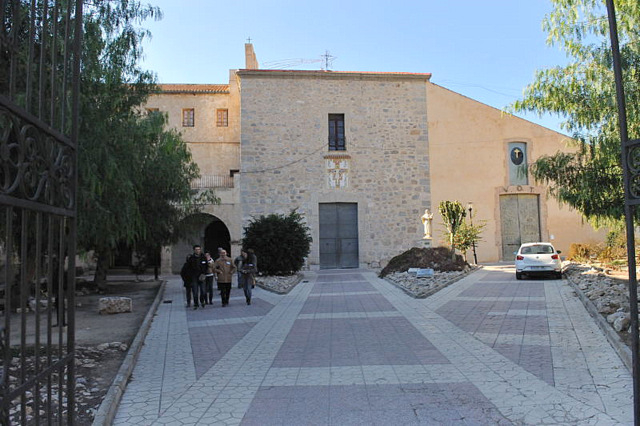 The church itself is a Baroque structure and reflects the attitude of austerity followed by the Franciscans, the main body of the church with little in the way of decoration.
The church itself is a Baroque structure and reflects the attitude of austerity followed by the Franciscans, the main body of the church with little in the way of decoration.
However, on the right hand side of the main nave is the Capilla de Ntro. Padre Jesús, concluded in 1605, which makes this convent well worth visiting should the opportunity present itself through one of the periodic guided visits offered by the tourism department.
 The chapel itself is exuberantly decorated with a masculine deep base colour which flickers between deep browns and plummy blue depending on the angle and lighting, highlighted with rolling scrolls and floral motifs in silver gilt. Set above the chapel is the camarín, containing the image of Ntro. Padre Jesús by sculptor José Sánchez Lozano, made in 1939.
The chapel itself is exuberantly decorated with a masculine deep base colour which flickers between deep browns and plummy blue depending on the angle and lighting, highlighted with rolling scrolls and floral motifs in silver gilt. Set above the chapel is the camarín, containing the image of Ntro. Padre Jesús by sculptor José Sánchez Lozano, made in 1939.
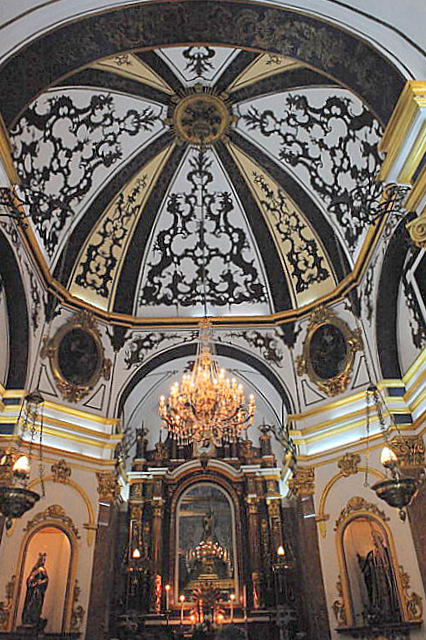 The first image originally commissioned for this chapel was by Máximo Buchi (1612), which was substituted 70 years later with a replacement sculpted by Nicolás de Bussi, a piece known locally as "El Ahogado" ( the drowned man) as it was dragged off by the river in 1713 during one of the periodic floods which assailed the centre of Orihuela prior to the creation of modern water management systems.
The first image originally commissioned for this chapel was by Máximo Buchi (1612), which was substituted 70 years later with a replacement sculpted by Nicolás de Bussi, a piece known locally as "El Ahogado" ( the drowned man) as it was dragged off by the river in 1713 during one of the periodic floods which assailed the centre of Orihuela prior to the creation of modern water management systems.
Unfortunately, having survived 200 years of floods this image was destroyed during the turbulent days leading up to the Spanish Civil War when thousands of sculptures and religious artifacts were burnt, dragged out into the streets and thrown onto bonfires, or the churches themselves torched.
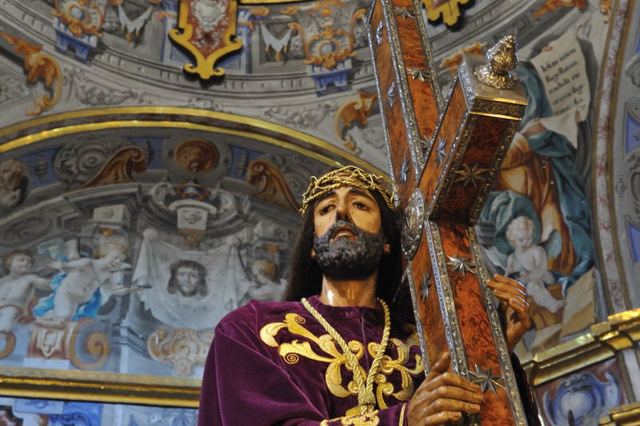 If the opportunity to climb up into the camarín is offered , take it, as the frescos painted during the 18th century by local artist, Antonio Villanueva are well worth seeing: miraculous survivors of the Civil War, simple, yet elegant, a riot of motifs and symbology which fill this intimate space with life and colour. The figure of Jesus of Nazareth is the proud owner of 5 different sets of robes, two of which are from the 18th century, and one from the 19th century still remaining, from an era when silk was a major crop in the Orihuela área.( Click History of Orihuela).
If the opportunity to climb up into the camarín is offered , take it, as the frescos painted during the 18th century by local artist, Antonio Villanueva are well worth seeing: miraculous survivors of the Civil War, simple, yet elegant, a riot of motifs and symbology which fill this intimate space with life and colour. The figure of Jesus of Nazareth is the proud owner of 5 different sets of robes, two of which are from the 18th century, and one from the 19th century still remaining, from an era when silk was a major crop in the Orihuela área.( Click History of Orihuela).
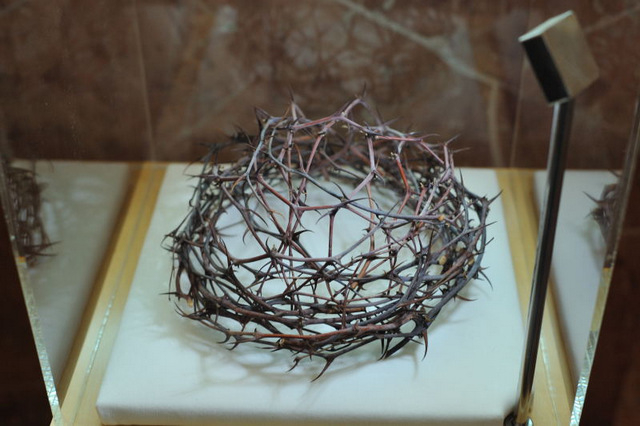 Also inside this chapel are a figure of Cristo de la Agonía by Francisco Salzillo, Murcia’s most famous baroque sculptor, as well as San Juan and a Dolorosa by José Sánchez Lozano. The Salzillo was commissioned in 1773 for the “Venerable Orden Tercera “and delivered in 1774, and although the statue of Christ himself made it through the war inside the modern day Archaeological Musuem, the Mary Magdalene, the Magdalena at his feet , was sadly destroyed. There are several Salzillos dotted around Orihuela, the most notable being the Holy Family in the iglesia de Santiago. Not too far from Orihuela is the Museo Salzillo in Murcia city, across the border in the Murcia region, which has a fine collection of pieces made by the sculptor.
Also inside this chapel are a figure of Cristo de la Agonía by Francisco Salzillo, Murcia’s most famous baroque sculptor, as well as San Juan and a Dolorosa by José Sánchez Lozano. The Salzillo was commissioned in 1773 for the “Venerable Orden Tercera “and delivered in 1774, and although the statue of Christ himself made it through the war inside the modern day Archaeological Musuem, the Mary Magdalene, the Magdalena at his feet , was sadly destroyed. There are several Salzillos dotted around Orihuela, the most notable being the Holy Family in the iglesia de Santiago. Not too far from Orihuela is the Museo Salzillo in Murcia city, across the border in the Murcia region, which has a fine collection of pieces made by the sculptor.
There is also a sidechapel leading off this chapel, which contains an interesting exhibition dedicated to the  Shroud of Turin. An accredited replica of the shroud, brought from Turin occupies pride of place and in the cabinets surrounding the display visitors can see replicas of the instruments of torture used by the Romans, as well as Crown of Thorns of the type which would have been used during the crucifixion. It’s sobering to see this display and look at the size and crude nature of the nails, the brutality of the whip with which Christ would have been flayed, the unyielding wood of the crown of thorns and the type of spear with which the body of Jesus would have been pierced.
Shroud of Turin. An accredited replica of the shroud, brought from Turin occupies pride of place and in the cabinets surrounding the display visitors can see replicas of the instruments of torture used by the Romans, as well as Crown of Thorns of the type which would have been used during the crucifixion. It’s sobering to see this display and look at the size and crude nature of the nails, the brutality of the whip with which Christ would have been flayed, the unyielding wood of the crown of thorns and the type of spear with which the body of Jesus would have been pierced.
During the Christmas season a large belén is also constructed around the central cloister of the building, which again, is well worth visiting should the opportunity be presented .
The building itself is today protected as a building of “Bien de Relevancia Local”, building of local relevance.
Location: Plaza de san Francisco, Orihuela
Click for map, Plaza de san Francisco, Orihuela



































